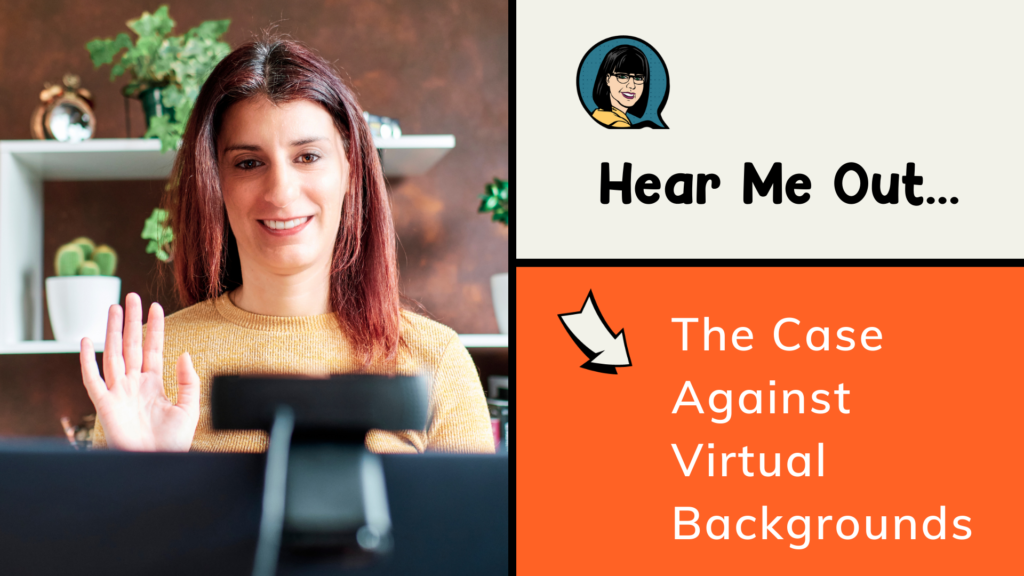We are many months into our virtual reality world and I’m still trying to figure out what exactly it is I need to be doing. The first few months felt like I was rubbing my eyes from a long night’s slumber, which then moved into staring blankly, and eventually transitioned into me squinting while attempting to look towards the light.
Now that I’ve had some time to adjust, however, one of the things I’ve chosen to focus on is my background because up until now my office has been a bit of an afterthought.
Why is a background so important?
Ahem. Because backgrounds say so much about us and are part of our first impression. And, like you, I’ve seen my fair share of bad ones (see exhibit A) . Backgrounds are a big deal! Just ask the tech titans and how their backgrounds were judged by others as they testified before congress.
EXHIBIT A

Authenticity matters.
We know when someone isn’t being genuine because their words and gestures are typically out of alignment. Virtual backgrounds only add to this misalignment because they just scream fake.
Virtual backgrounds aren’t real and during a time when everything is now done virtually, we crave humanity and the realness and authenticity that comes with being human.
Have you noticed how you enjoy seeing a part of your Zoom partner’s world? Who knew your colleague had a deer head in their living room or a Sponge Bob poster hanging up?! Pictures, souvenirs, books, tchotchkes, etc. all help paint a clearer picture of a person and it provides us with clues and the opportunity to “better read” someone. It creates a connection. This means we need to pay more attention to the image we are projecting and give some thought to curating the messages we wish to convey.
Isn’t that fake you ask? Nope, it’s just being aware and intentional.
This article citing body language expert Mark Bowden sums this concept up beautifully.
Technology.
Unless you have a new computer and keep up with the latest updates, virtual backgrounds can have tech glitches and lags. Slight movements have the ability to make part of your body disappear and can give you a pixelated look. And, unless you are bald, typically the edging around your head looks bad and draws attention to the fact that the background is fake.
I recently saw Elvis Costello interviewed by Stephan Colbert on A Late Show and he used a virtual background during the conversation. Unfortunately, it was incredibly distracting. The cutout around his head was constantly changing and parts of his arm kept going in and out of focus, which is what my eye went to, so I missed out on some of what he was saying. Sad trombone. If you want to see what I mean, check it out yourself.
Exhibit B
But, virtual backgrounds are so fun and easy and hip! Yes, I know.
I mean who doesn’t love a funny background (Hello “Tiger King” or “Between Two Ferns”) or a well-branded background to help attract attention? My advice is to just take stock of the messaging you are trying to send. Virtual backgrounds can certainly be fun so be creative but use them more in your social life. Check out this article here for great pointers on what does and doesn’t work.
So what can you do to improve your real background?
Your co-pilot (who is still figuring out her office),

